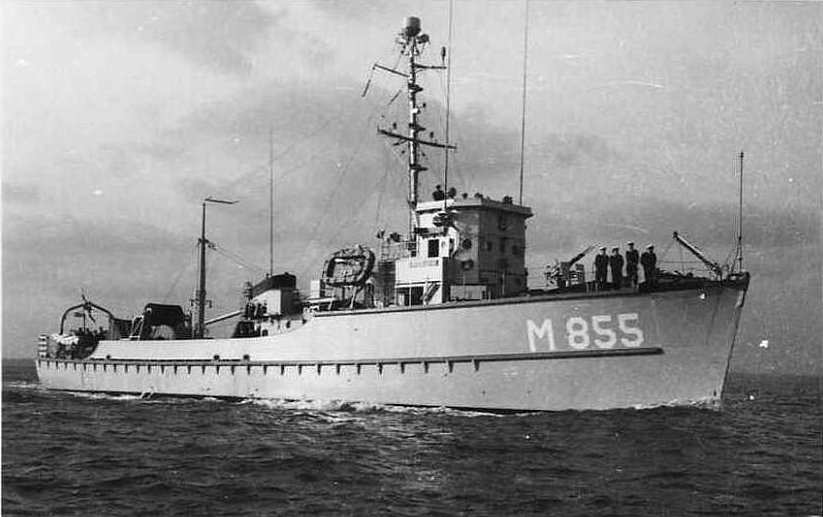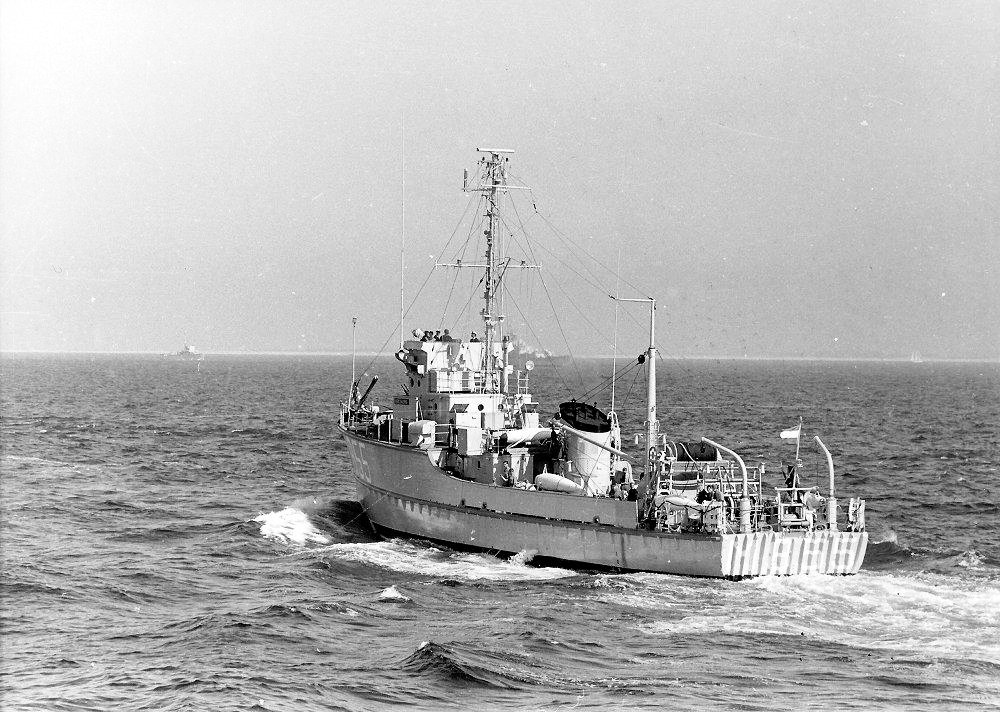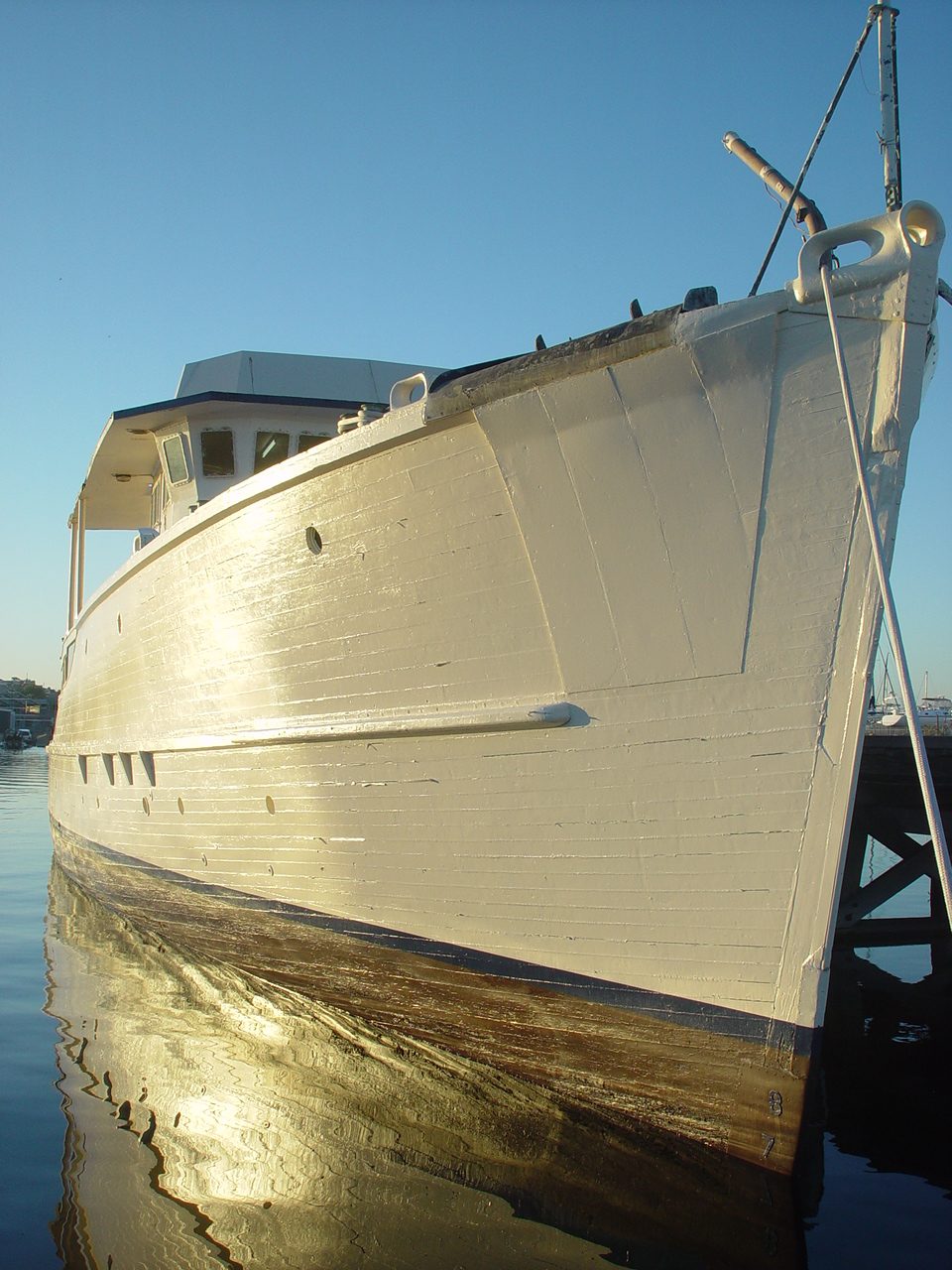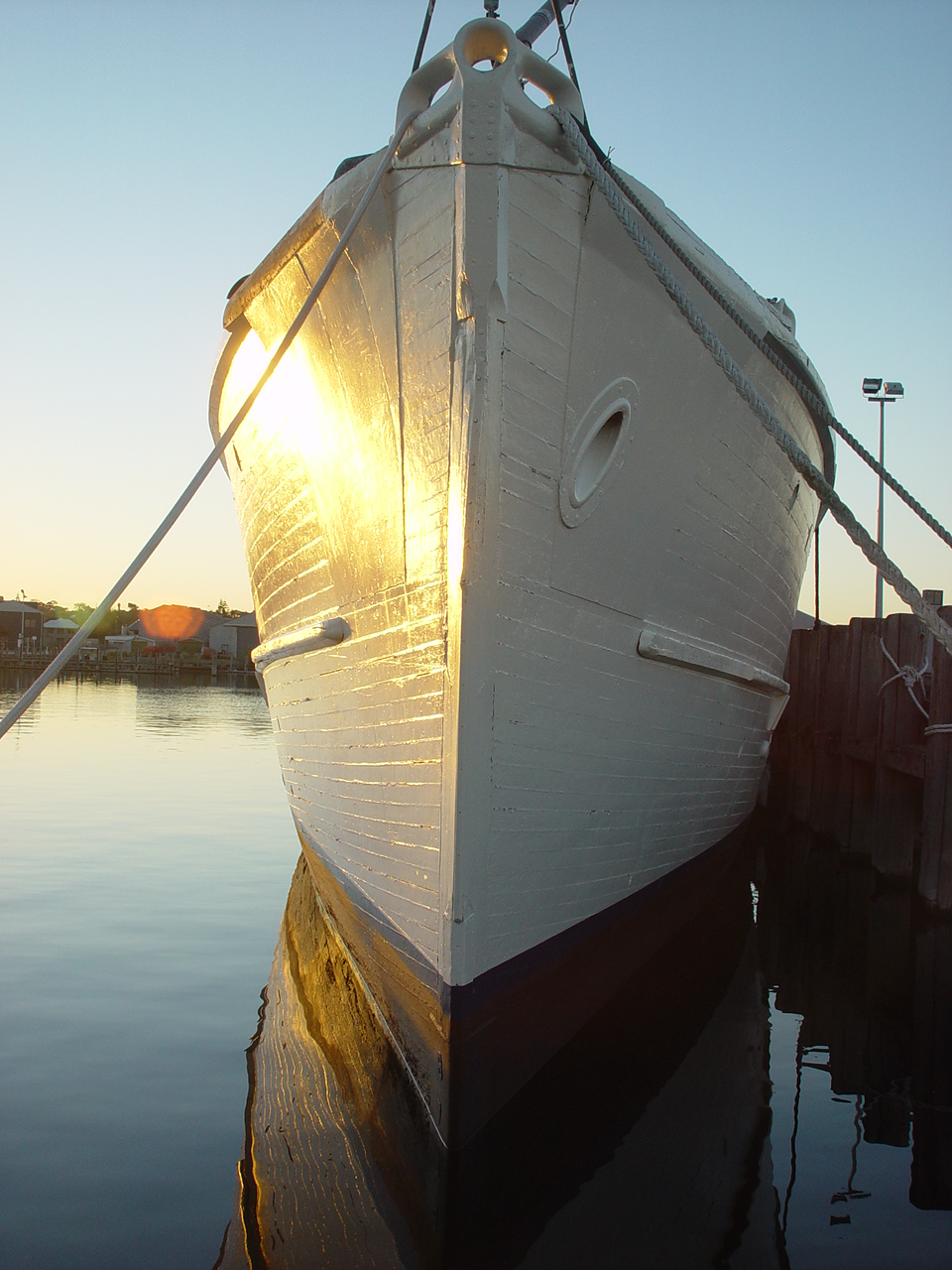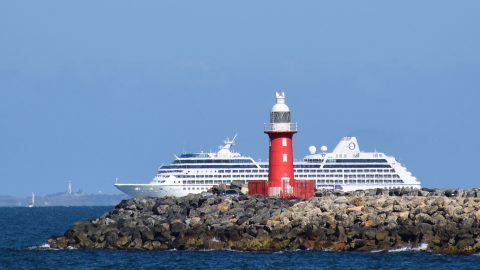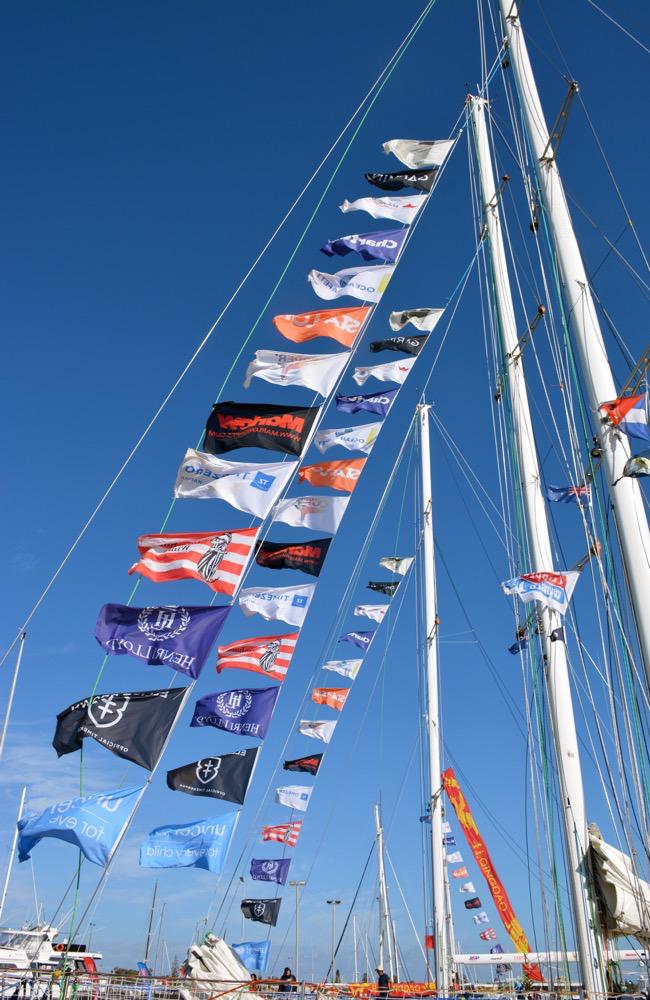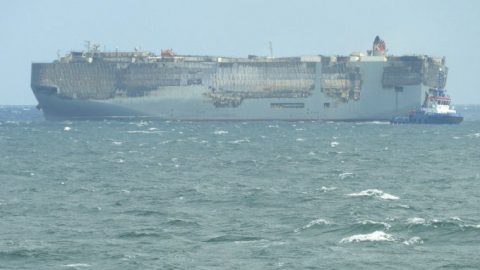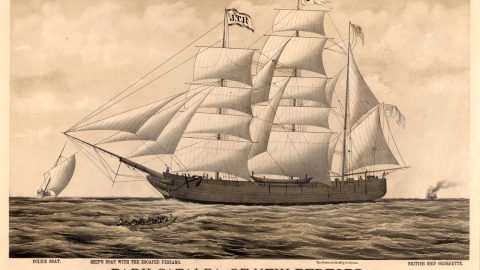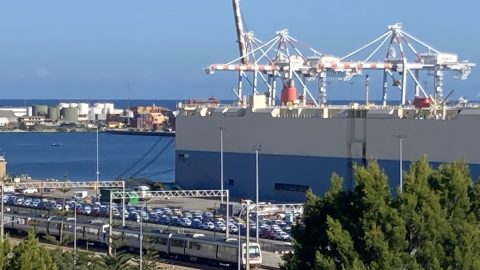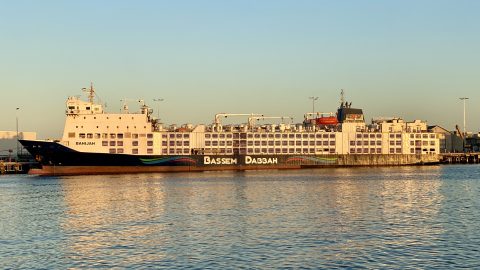Inside she looked and smelled like the Black Hole of Calcutta, yet I felt like I had found a Rembrandt in the attic. Here was a rare find, fully deserving restoration.
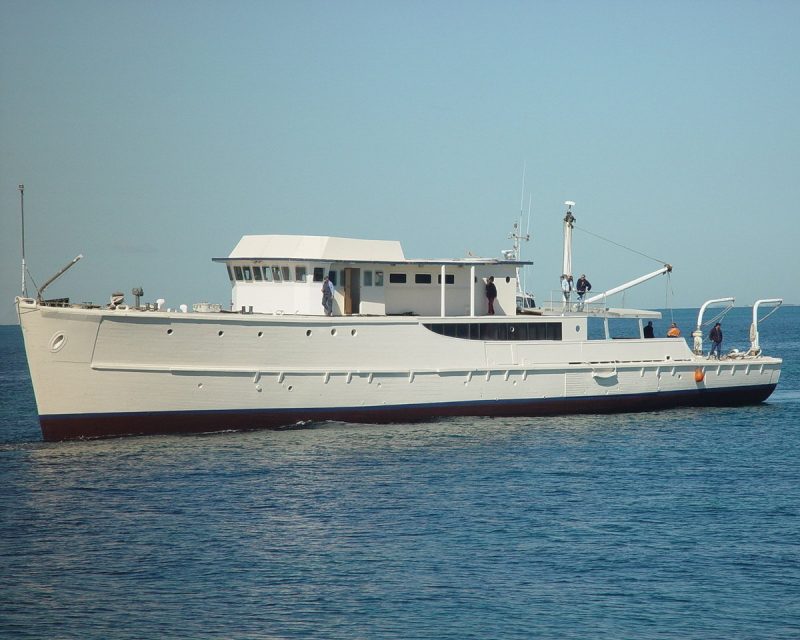
The RV “Pax” a few years after the author’s discovery of her
The former warship was in a sorry state when I first saw her on a visit to the Port of Fremantle in January 1991. Sun, water, and salt had ravaged her paint and exposed her timbers. In Navy tradition, there were no portholes in this ship, so all cabins and holds were completely dark. As there was no fuel to run the generators and start the lighting system, I inspected her with a torch. All her decks leaked badly. There were no dry quarters in the entire vessel. Forty-one mattresses were mouldy and rotten.
With a length of 44 metres and weighing 330 tons, RV Pax was Australia’s largest wooden vessel. She was constructed in San Francisco with the finest oak and Douglas fir cut from ancient forests. Her extensive fittings were crafted in solid naval bronze and all fuel and water tanks were built in heavy copper.
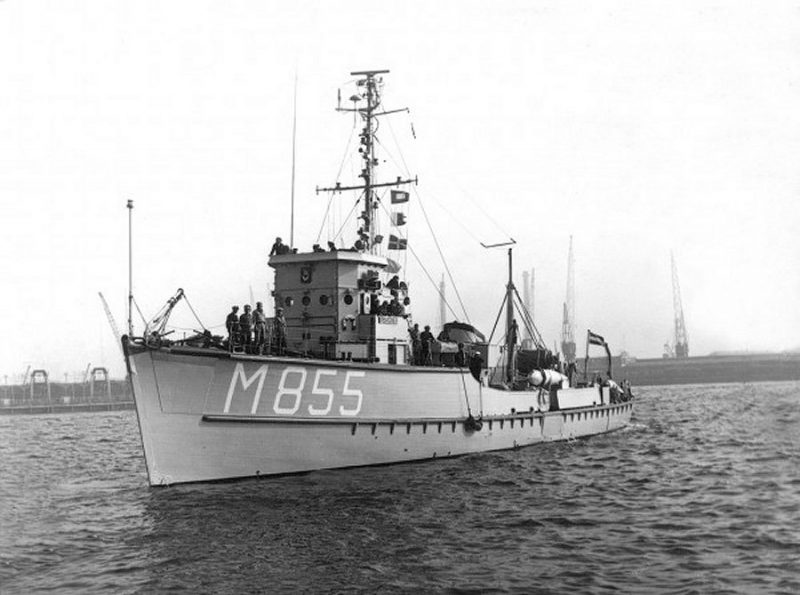
The RV Pax in an earlier life as M855 of the Dutch Navy
Built as an acoustic minesweeper, she could not have any magnetic materials on board that might attract and trigger an explosion from a mine. As a result, her perfectly preserved engines (slow-revving Cleveland diesels), transmissions, and machinery were constructed entirely of nonmagnetic stainless steel.
5,000 years of wooden ship building, one of humanity’s most important traditions, and driver of technological innovation, is ending. Few wooden ships have been built in the past 50 years and it is almost guaranteed that wooden shipbuilding around the world will become extinct in the coming years. Skills, facilities, tools, and suitable timbers are in major decline. Today it would cost many times more to build a boat in wood than in steel. The great shipbuilding timbers: including mahogany, Baltic pine, teak, old growth Douglas fir, and Kauri have been exploited so heavily that few productive forests remain on earth.
Shipwrighting is regarded as the most demanding, and having the highest skill requirements, of all the trades – especially when it comes to wooden boats. Correlated to the demise of shipwright trades is the disintegration of wooden ships themselves. Pre-modern techniques provided little protection against rot and worm damage. Combined with their vulnerability to being wrecked, the life expectancy of a wooden ship was in the order of 20 to 30 years.
21st century anti-fouling coatings, epoxy preservation, and high tech paints have meant that an existing wooden ship can be preserved indefinitely. But where are the wooden ships to preserve? If the industry as a whole waned over 50 years ago and most wooden ships only lasted 20 to 30 years, then few wooden ships of note should remain in the world. And this proves to be the case.
I had been searching for a suitable, well built, comfortable ship for conversion to a marine research vessel. MSC148, built during the Korean War, served as a minesweeper for 20 years of the Cold War. She was built to the highest standards and most advanced technology of the day. The USA was rich, with a burgeoning economy. It could afford the best and it was essential in the face of the Cold War. MSC148 was therefore built using the historic pinnacle of wooden boat building technology. She was the product of a then abundant availability of premium material, skilled traditional shipwrights, new technology, and arguably for that time, the best naval architects in the world, Sparkman and Stevens. She was the sole survivor of 160 commissioned Acoustic Minesweepers (AMS) in the Bluebird class. She was perfect for me to use as a base for my marine research focusing on the drag and friction reduction strategies of sea creatures and seaweeds.
Although built for the United States Navy, MSC148 was soon transferred to NATO and, in 1954, assigned to the Royal Netherlands Navy. Christened MSS “Breskens,” M855 served as a mine sweeper in the North Sea until being decommissioned in 1976 and sold to a private owner.
It is rumored that she was then involved in illegal smuggling activities along the North African coast until eventually being acquired by Prince Jah, the Nizam of Hyderabad – heir to the world’s richest man (his grandfather) and inheritor of one of the world’s most valuable and fabulous collections of jewels.
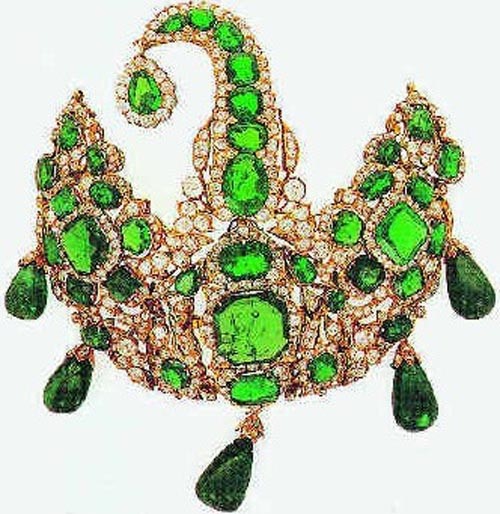
Hyderabad emerald headpiece
Prince Jah renamed the vessel the Motor Yacht “Kalbarrie” and sailed her to India and Singapore, where she underwent a conversion to a private yacht. At that time, it was reported that many secret compartments were added and according to the Prince’s personal staff, she was used to bring family treasures from India. The many priceless artifacts accumulated by the royal family during centuries of rule included two solid gold “coins”, which were so large that it required a horse to carry them. The coins were 370 years old, minted by Mughal emperors and valued at about $18 million in 1980. The prince subsequently offered them for sale through Christie’s auction house, causing a challenge to the sale with the claim that they were national treasures.
The staggering collection of family jewels included the 184.75 carat Jacob’s Diamond, formerly known as the Victoria and then Imperial Diamond. It is one of the largest in the world. Before being cut, it was 457 carats, by far the world’s largest diamond. Undervalued by Jah’s ancestor, it was used as a paperweight for many years.
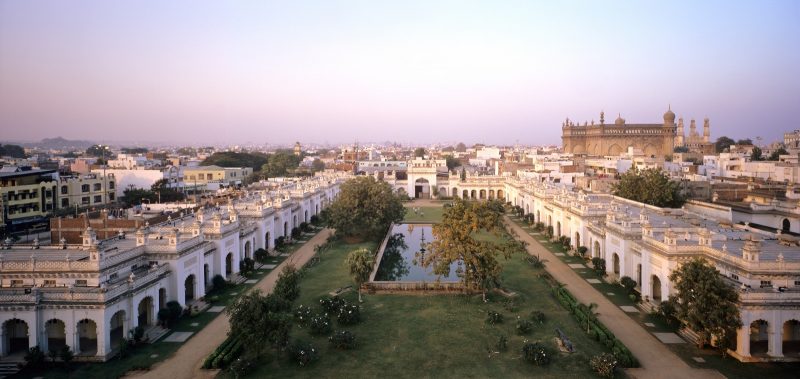
The Palace at Chowmahalla
With a kingdom the size of France, the Nizam had 16 million subjects, 40 palaces, an army of 22,000 and 11,000 servants. The previous Nizam, who in today’s money was worth $211 billion dollars – more than double Bill Gates’ fortune – had hundreds of shirts flown to Paris to be laundered. He had a stable of Rolls Royces and Bentleys from 1916 vintage onwards. Bags of pearls were used as doorstops. There were wagons of gold bars, 25,000 diamonds, and 2,000 emeralds.
In his thirties, whilst studying engineering in London, Prince Jah was shocked to find that his grandfather had bypassed the assumed heir (the Prince’s father) and left him his fortune. Unprepared for such wealth and responsibilities, he embarked on a lavish lifestyle including a major birthday celebration in Hyderabad attended by Jackie Kennedy. Yearning for a quieter life, he decided to emigrate to Australia, with as much wealth as he could carry. The Indian government was seeking to appropriate the inheritance as national treasures. “Kalbarrie” was sailed to Western Australia.
Prince Jah had a personal ambition to catch the world’s largest game fish (a great white shark) in the Great Australian Bight. To handle such a prize, a three-ton crane was fitted to the aft deck of Kalbarrie. It also served to lift his Land Rover on and off the boat when visiting remote ports. The Prince moored his vessel in Fremantle, the port to Perth, and threw grand parties onboard for wealthy friends and socialites, especially during the 1987 America’s Cup yacht races off Fremantle.
In the 1980s, the ship was suspected of being used to smuggle stolen bullion out of Australia from the celebrated “Mint Gold Heist.”
Perth is the most isolated capital city in the world. The nearest neighboring city is Adelaide – 2700 kilometers away and connected only by a two-lane highway stretching across barren desert. Established in 1829 as the most remote outpost of the British Empire, Perth had not been exposed to sophisticated criminal activities. Until….
Western Australia built its early economy and culture on a major gold rush in the late nineteenth century. The official processor and marketer of the large quantities of precious metals, still being mined today, has been the State government-owned Perth Mint.
It came to pass that an anonymous gentleman, Mr X, began telephoning staff at the Mint on a regular basis inquiring about the fluctuating market price of bullion. Over several months he became well known to and friendly with the staff. His message? That as soon as the price was right, he was going to purchase a large quantity of bullion. Coincidently, during this period, a suburban bank was broken into and set on fire. Mysteriously, no money was stolen. What wasn’t discovered until much later was that some blank cashier’s cheques were taken and the fire was set to hide the fact.
Next scene: Mr X telephoned his “friends” at the mint and advised that the bullion price was now right. He was going to purchase a large quantity with a bank cashier’s cheque delivered by a courier service that would also pick up the gold. It went flawlessly. Mint staff, trusting in the Australian tradition of “mateship,” greeted the courier with open arms. They carried the gold out to his van, helped him load it and waved him and the gold goodbye.
The van driver was later found and questioned. He had been instructed to drop his load of gold on the road verge beside an unsecured airstrip.
As a former Fisheries officer I had come to know the Mickelberg brothers, a family of pioneering, professional abalone divers, hard-working men living adventurous lives. It so happened that one of the Mickelbergs was a pilot. One thing led police to another and pretty soon the brothers were deemed suspects. Coincidently it seems that the police suspected one of Prince Jah’s staff of being implicated in the affair, so when MY Kalbarrie departed soon after for foreign ports, the police surmised that the stolen gold was aboard. The hunt was on. Some days and 2,000 kilometres later, Kalbarrie called into Broome to refuel on her way to Papua New Guinea and beyond. Police swarmed the vessel and searched it for two weeks. Holes were cut in the interior paneling, air-conditioning ducting and floors in a thorough but vain attempt to find the booty. Sniffer dogs were similarly unsuccessful.
Far from convinced of the vessel’s innocence in the matter, the police ultimately had no choice but to release her. Kalbarrie sailed on another 3,000 kilometers to Port Moresby in Papua New Guinea. Local police had been alerted by Australian authorities, so they too seized and searched the vessel. Despite weeks of searching from top to bottom, no gold was found – though several of the aforementioned secret compartments were still not discovered. The innocence or otherwise of the Mickelbergs has been hotly contested ever since. They were convicted at trial and served years in prison. In 2004, the West Australian Supreme Court quashed their convictions. Members of the police force were found to have fabricated evidence. There followed a formal apology from the police and very large compensation payouts to the brothers. The crime still has not been solved.
The Prince subsequently fell upon hard times and the State’s Sheriff eventually seized the vessel, after her return to the State, for unpaid bills. It is reported that more than 800 claims had been made against the Prince and his inheritance. I was in the right place at the right time. I purchased her, renamed her the Research Vessel “Pax,” and converted her to a research platform.

RV Pax into the water 2007
I spent 20 years stabilising and maintaining her, and learned that a couple of very valuable items of jewelry had gone missing on the vessel during transit from India. The exciting thought of finding them was never far from my mind. I searched high and low with no luck, though I did find a number of empty secret compartments.
In 2012 I wound up my ship-borne research and contemplated what should happen to the vessel I’d fallen in love with. Certainly I thought it should be preserved for future generations. I determined to donate her to a worthy cause and ran a national advertising campaign calling for expressions of interest and ideas for her future. There were many responses from as far afield as Switzerland, the US, and many parts of Australia.
I was approached by a group of first responders suffering PTSD – ambulance, police, firefighters, and military, who felt it would be an excellent platform and activity for their convalescence. I was delighted to gift Pax to them.
The new owners started out well, though their resources were scarce and attendance to the vessel was limited. Thieves broke into a storage facility and stole over $100,000 of propellers and other irreplaceable equipment. That was bad enough, but it appears that vandals later broke into the boat itself, opening the seacocks to disguise their entry. Sadly, that resulted in her sinking on her mooring in Cockburn Sound, with seawater flooding all her compartments, engines, and equipment.
The veterans could not organize a recovery, so the State of Western Australia stepped in to raise the wreck and dispose of her – the last example of the peak of 5,000 years of wooden shipbuilding was dismantled, crushed, and carted off to scrap merchants and landfill.
I did recover Pax’s steering wheel, compass, and other artifacts, which I plan to donate to the Augusta Museum.
I still wonder what became of the fabulous missing jewels and gold.
PLEASE HELP US TO GROW FREMANTLE SHIPPING NEWS
FSN is a reader-supported, volunteer-assisted online magazine all about Fremantle. Thanks for helping to keep FSN keeping on!
* Words by Jay Harman. The black and white images, that of the Hyderabad emerald and that of the Palace are in the public domain; the others belong to Jay Harman.
** And don’t forget to SUBSCRIBE to receive your free copy of The Weekly Edition of the Shipping News each Friday!
